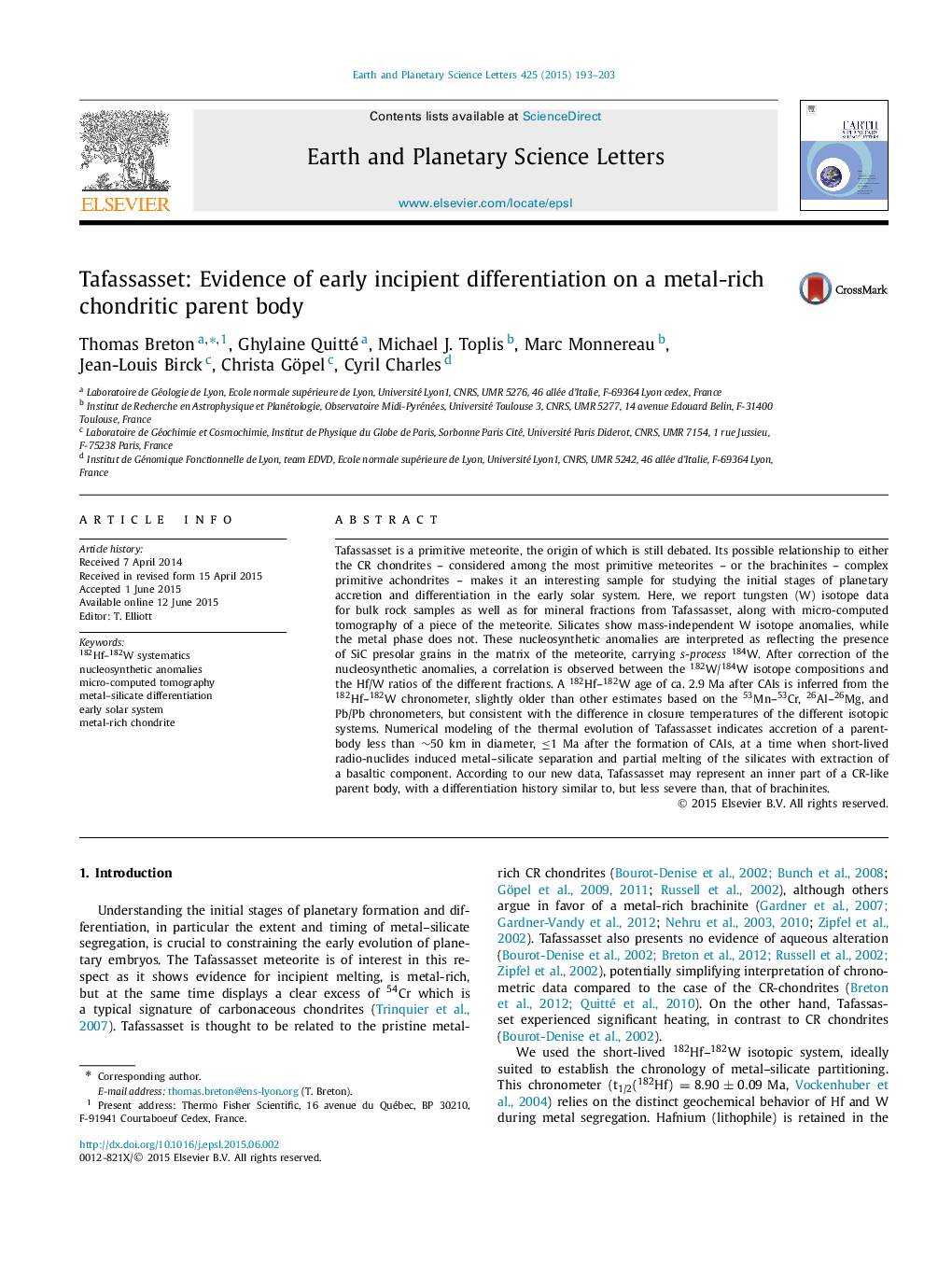| کد مقاله | کد نشریه | سال انتشار | مقاله انگلیسی | نسخه تمام متن |
|---|---|---|---|---|
| 6428285 | 1634731 | 2015 | 11 صفحه PDF | دانلود رایگان |

- We analyzed tungsten isotopes in separates from Tafassasset.
- We show that Tafassasset presents strong nucleosynthetic anomalies.
- With micro-CT, we show that the metal distribution in Tafassasset was misunderstood.
- We propose a thermal evolution model for Tafassasset's parent body.
- Incipient melting already took place on small bodies early in the solar system.
Tafassasset is a primitive meteorite, the origin of which is still debated. Its possible relationship to either the CR chondrites - considered among the most primitive meteorites - or the brachinites - complex primitive achondrites - makes it an interesting sample for studying the initial stages of planetary accretion and differentiation in the early solar system. Here, we report tungsten (W) isotope data for bulk rock samples as well as for mineral fractions from Tafassasset, along with micro-computed tomography of a piece of the meteorite. Silicates show mass-independent W isotope anomalies, while the metal phase does not. These nucleosynthetic anomalies are interpreted as reflecting the presence of SiC presolar grains in the matrix of the meteorite, carrying s-process 184W. After correction of the nucleosynthetic anomalies, a correlation is observed between the 182W/184W isotope compositions and the Hf/W ratios of the different fractions. A 182Hf-182W age of ca. 2.9 Ma after CAIs is inferred from the 182Hf-182W chronometer, slightly older than other estimates based on the 53Mn-53Cr, 26Al-26Mg, and Pb/Pb chronometers, but consistent with the difference in closure temperatures of the different isotopic systems. Numerical modeling of the thermal evolution of Tafassasset indicates accretion of a parent-body less than â¼50 km in diameter, â¤1 Ma after the formation of CAIs, at a time when short-lived radio-nuclides induced metal-silicate separation and partial melting of the silicates with extraction of a basaltic component. According to our new data, Tafassasset may represent an inner part of a CR-like parent body, with a differentiation history similar to, but less severe than, that of brachinites.
Journal: Earth and Planetary Science Letters - Volume 425, 1 September 2015, Pages 193-203